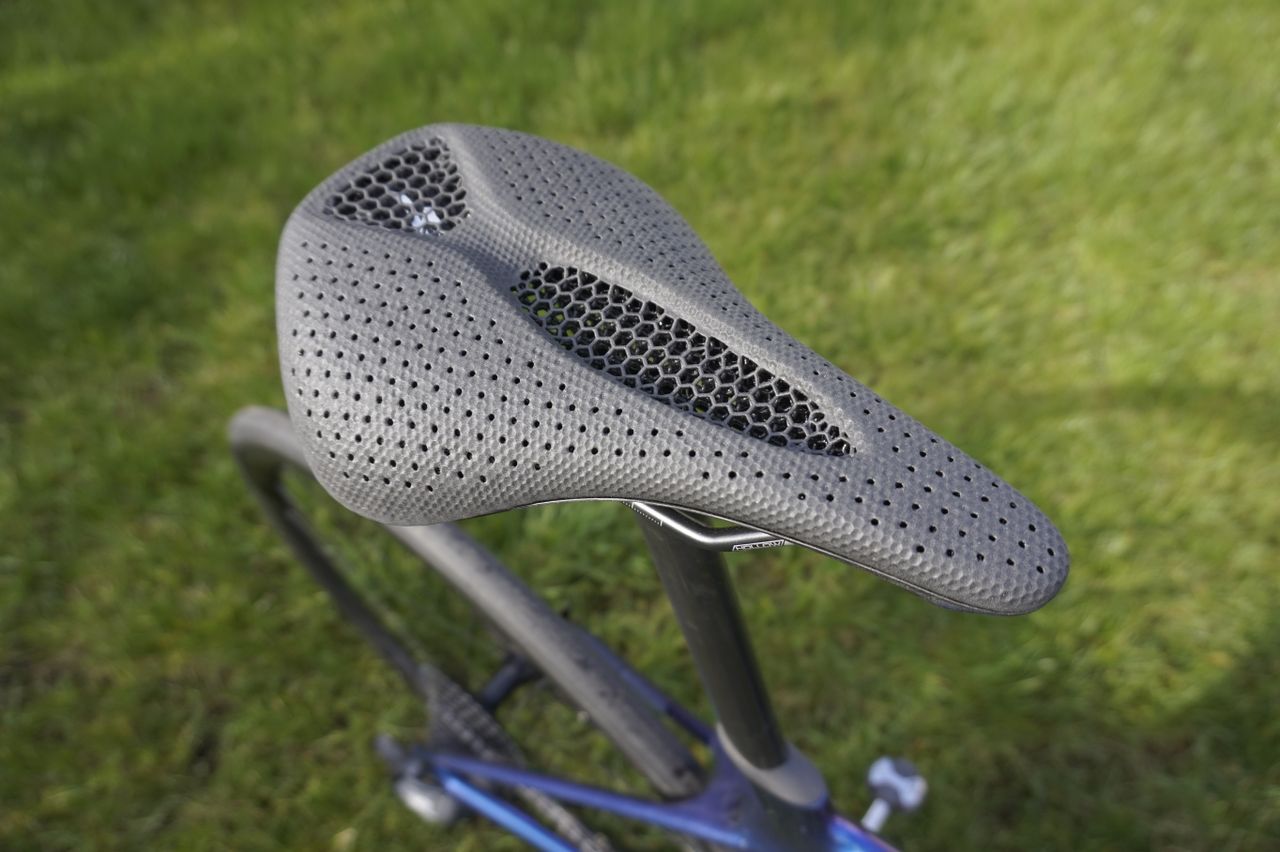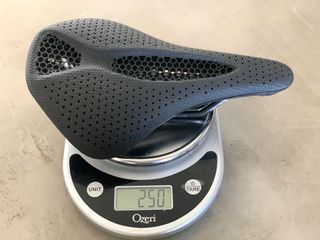Specialized Power Pro with Mirror: first ride review
Previously only available in the S-Works range, Specialized’s Mirror technology is now available in the Power Pro.


Specialized first introduced the cycling world to its Mirror Technology back in 2019 with the launch of its 3D-printed, honeycomb-structured S-Works Power with Mirror Technology saddle.
This technology was created in partnership with high-tech material manufacturer, Carbon, and puts liquid polymer through a process called Digital Light Synthesis and then 3D-prints complex lattice structures, which are said to be superior to foam due to its tunability.
After introducing this new technology with the S-Works Power saddle base, Specialized then also applied it to the S-Works Romin Evo in 2021.
The technology appears to be here to stay as Specialized today launched the Power Pro with Mirror, trickling down the foam-alternative into a lower price bracket. While by no means cheap, the all-new Power Pro with Mirror saddle will retail about $125 less than its S-Works predecessor.

Specialized Power Pro with Mirror saddle

Specialized Power Pro with Mirror Technology saddle





Trickle-down Beneficiary
The Power Pro with Mirror starts with Specialized’s popular Power shape, short-nosed and extra-wide for a more planted stance. This Power saddle iteration is however longer than the original Power shape, and with a more rounded shape in the rear.
For the first time, the base for the Power Pro was created using a reclaimed carbon process. This process combines carbon fiber scraps from factory production with nylon to create a composite that can then be shaped and molded for a variety of uses.
The reclaimed carbon base is then topped with the exact same Mirror padding as used in the S-Works version, which is a 3D printed polymer matrix comprised of 14,000 struts and 7,799 nodes, each of which can be tuned individually for sit bone comfort.
The saddle sits on titanium rails, which for a small weight penalty, lower the cost significantly and allows for multi-terrain use. Specialized says the rails are strong enough to handle road, gravel and trail riding.
On my scale, the 155cm Power Pro with Mirror Technology weighed in at 250 grams, which is around 60 grams heavier than the carbon-railed S-Works version.
The saddle is available in 143cm and 155cm width from Specialized directly as well as select retailers starting today, and retails for $325 / £290/ €370 / AUD500.

First Ride Review:
If you haven’t seen, or rather touched, the 3D-printed matrix in real life, the most notable thing about this honeycomb material is how squishy it looks and feels to the touch. Yet once you place your full weight on it, the saddle is remarkably firm. Not squishy at all in fact, which is a good thing. While it felt almost too firm at first, the density was perfectly comfortable after breaking it in.
I did, however, find that the material, when interacting with my lycra bib shorts, was a tad sticky. The shape of the Power saddle line already encourages a more planted and forward leaning stance, which combined with the stickiness, made me feel too stationary. As a result, I kept getting out of the saddle trying to reposition myself. So instead of holding me in place, I was more wiggly than ever.
Additionally, while the recess does relieve pressure compared to a solid saddle, I think a full cut-out still suits me better while riding in a more aggressive road position.
With that said, saddle fit is highly dependent on your riding style, and for me, the saddle comfort improved significantly when I tried it on my trail bike, which lends itself to a slightly more upright position.
WIth all saddles, keep in mind that saddle fit is a personal preference and the Power saddle is hugely popular with road riders the world over. I think I simply prefer a saddle that allows for more movement like the Romin, which has a lot more to do with the shape of the saddle rather than the foam or foam-alternative topping.

Thank you for reading 20 articles this month* Join now for unlimited access
Enjoy your first month for just £1 / $1 / €1
*Read 5 free articles per month without a subscription

Join now for unlimited access
Try first month for just £1 / $1 / €1
Get The Leadout Newsletter
The latest race content, interviews, features, reviews and expert buying guides, direct to your inbox!

Cycling Weekly's North American Editor, Anne-Marije Rook is old school. She holds a degree in journalism and started out as a newspaper reporter — in print! She can even be seen bringing a pen and notepad to the press conference.
Originally from The Netherlands, she grew up a bike commuter and didn't find bike racing until her early twenties when living in Seattle, Washington. Strengthened by the many miles spent darting around Seattle's hilly streets on a steel single speed, Rook's progression in the sport was a quick one. As she competed at the elite level, her journalism career followed, and soon she became a full-time cycling journalist. She's now been a cycling journalist for 11 years.
-
 Not a typo! These Oura Gen 3 Smart Rings have up to $100 off – Get a deep dive on your health and well being with these Amazon deals
Not a typo! These Oura Gen 3 Smart Rings have up to $100 off – Get a deep dive on your health and well being with these Amazon dealsDeals The Oura Smart Rings one of the best way's to track biometrics with a focus on recovery and wellness
By Paul Brett Published
-
 How to watch Gent-Wevelgem 2025: Everything you need to live stream the Flemish Classic
How to watch Gent-Wevelgem 2025: Everything you need to live stream the Flemish ClassicAll the information on broadcasters and live streams for Gent-Wevelgem on 30 March, as the Spring Classics continue in Flanders.
By Adam Becket Published